
Top 10 Best Vegetables to Start from Seed for a Thriving Garden
Starting your own vegetable garden from seed is one of the most rewarding and cost-effective ways to grow fresh, healthy produce. If you’re wondering which crops are best for beginners or seasoned gardeners alike, this “Top 10 Best Vegetables to Start from Seed” guide will provide you with everything you need. Growing vegetables from seed not only allows you to choose the varieties that thrive in your climate, but it also offers a sense of accomplishment when you see your plants grow from tiny seeds to bountiful harvests. Let’s dive into the top vegetables that make starting from seed a simple and fruitful experience! 🌿
Table of Contents
Toggle🌱 Why Starting Vegetables from Seed is a Great Idea 🌱
Starting vegetables from seed offers several benefits that make it an excellent choice for both beginner and seasoned gardeners. Here’s why:
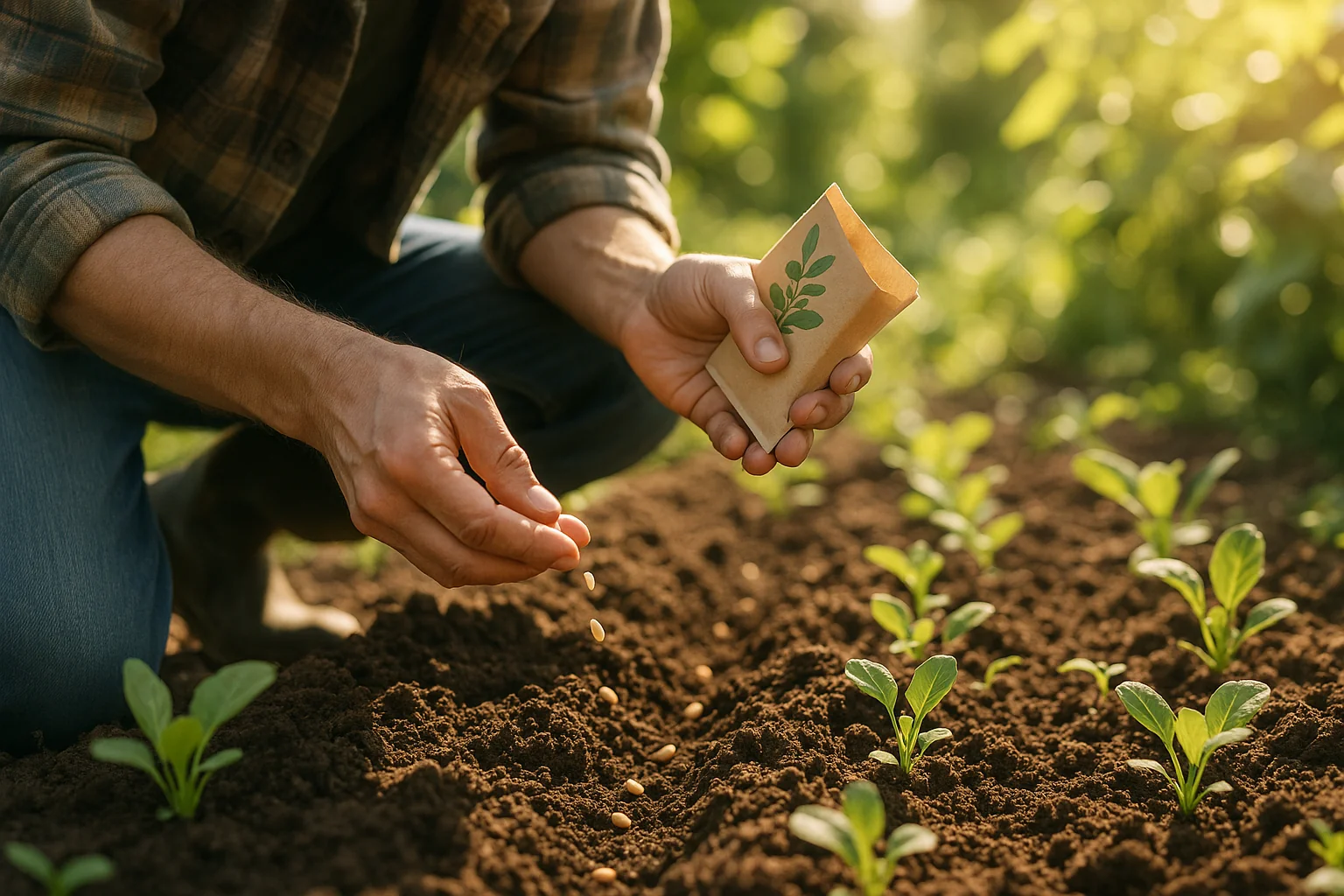
💰 Cost-Effective 💰
Seeds are generally much cheaper than buying established plants. With a small investment in seeds, you can grow a variety of vegetables throughout the season, saving you money in the long run. 🌻
🌈 Wide Selection 🌈
Starting from seed opens up a world of variety. You can choose from numerous vegetable types, heirloom varieties, and even rare cultivars that might not be available in local nurseries. 🌿
🌱 Better Control Over Growing Conditions 🌱
When you grow your vegetables from seed, you have complete control over the process from day one. You can ensure that your plants are nurtured in the right soil, light, and temperature, leading to healthier, stronger plants. 🌷
🚀 Faster Growth and Stronger Plants 🚀
Growing from seed allows you to start early, giving your plants a head start. This often results in stronger, more robust vegetables that are better equipped to handle pests and diseases. 🌻
😊 Satisfaction of Growing Your Own 😊
There’s immense satisfaction in watching your seeds grow into full-fledged plants. Starting vegetables from seed can also help foster a deeper connection with your garden, enhancing your overall gardening experience. 🌸
In summary, starting vegetables from seed is an affordable, rewarding, and highly effective way to grow your own food. It gives you more control over your garden, provides access to unique varieties, and results in healthier plants. Whether you’re looking to save money or enhance your gardening skills, starting from seed is the way to go. 🌻🌱
🌿 Factors to Consider When Choosing Vegetables to Start from Seed 🌿
When selecting vegetables to start from seed, there are several key factors to consider to ensure success in your garden. Here’s a quick guide to help you make informed choices:
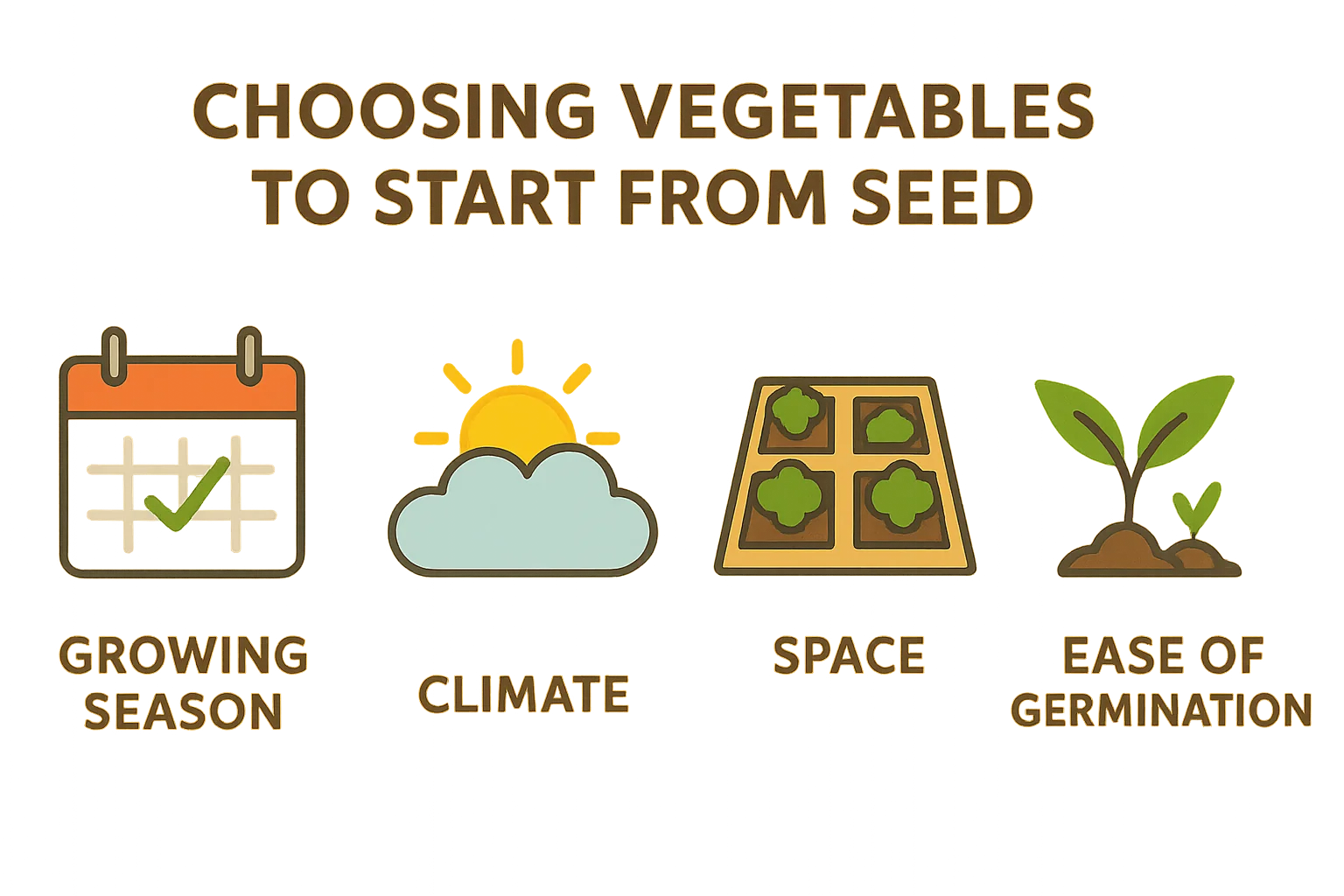
⏳ Growing Season Length ⏳
Some vegetables thrive in longer growing seasons, while others do well with shorter seasons. If you live in an area with a short growing season, consider crops like lettuce, radishes, or spinach that mature quickly. For longer growing seasons, tomatoes, peppers, and squash are ideal. 🌞
🌡️ Climate and Temperature 🌡️
Every vegetable has a preferred temperature range. Warm-season crops, like beans and cucumbers, require warmer soil and air temperatures, while cool-season crops, such as peas and broccoli, perform better in cooler weather. Know your local climate to select the right seeds. 🌦️
🏡 Space and Garden Size 🏡
If you’re working with limited space, choose compact or dwarf vegetable varieties, like mini tomatoes or container-friendly peppers. Vertical gardening or square-foot gardening can help maximize space for larger plants like pumpkins and beans. 🌳
🌱 Ease of Germination 🌱
Some seeds are easier to germinate than others. Crops like beans, lettuce, and sunflowers are beginner-friendly, while others, such as celery or onions, may require more attention to detail and patience. Opt for seeds that match your gardening experience level. 🌸
🛡️ Disease Resistance 🛡️
Choose vegetable varieties known for their disease resistance. Many seed packets indicate if a variety is resistant to common pests or diseases like blight or mildew, which can make a big difference in your plant’s health and productivity. 🌿
🍽️ Personal Preferences and Usage 🍽️
Grow what you enjoy eating! Consider your family’s preferences and how much of each vegetable you’ll use. High-yield vegetables like tomatoes, zucchinis, and carrots are versatile and can be used in various dishes, while specialty crops may require more effort and space for less yield. 🍴
By carefully evaluating these factors, you can select the right vegetables to start from seed, increasing your chances of a fruitful and enjoyable gardening experience. 🌱🌻
🌱 Top 10 Best Vegetables to Start from Seed 🌱
Starting vegetables from seed can be a rewarding experience for gardeners of all levels. By planting seeds directly, you not only save money but also have more control over the growth process. Here are the top 10 vegetables to start from seed, ideal for beginner and experienced gardeners alike:
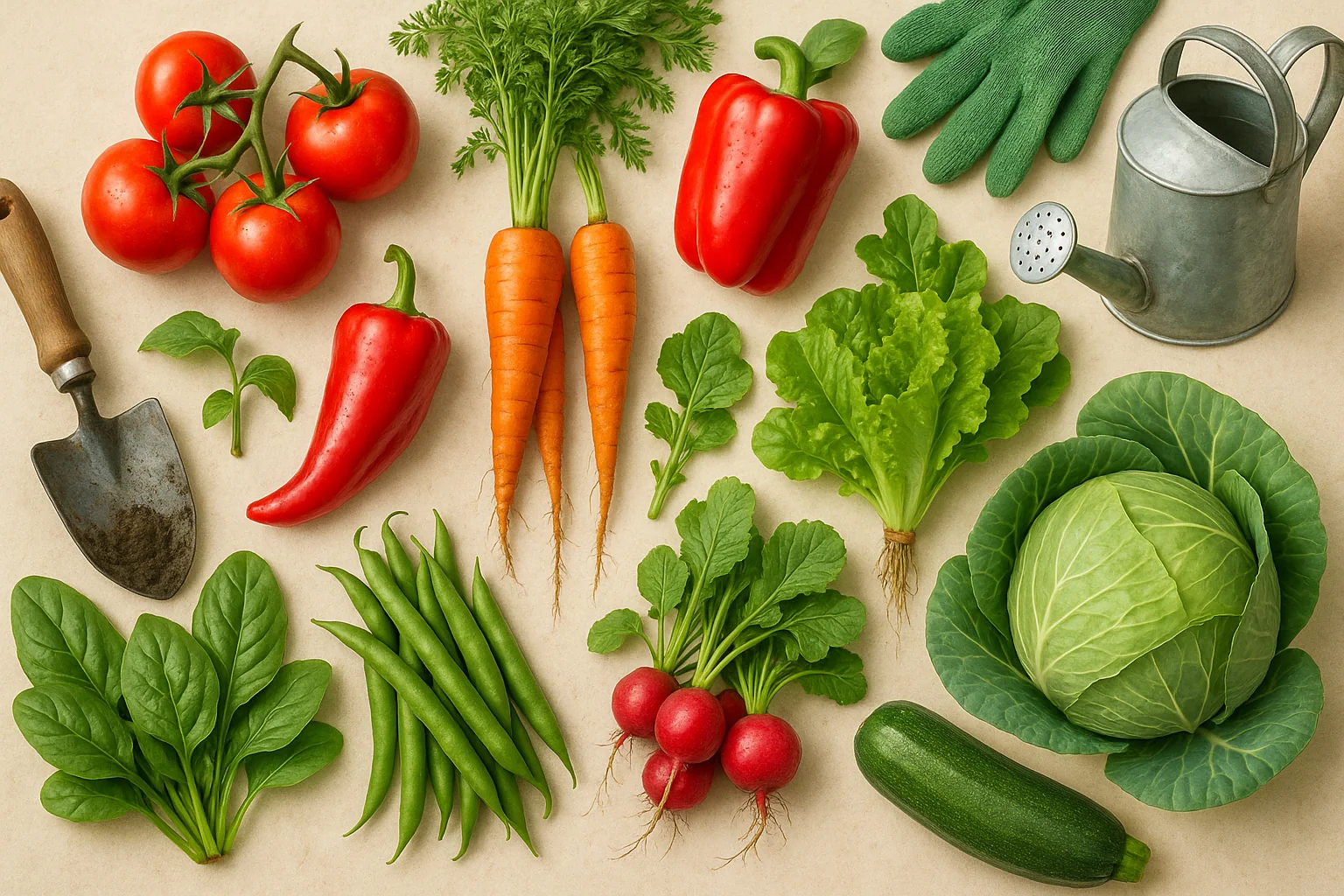
🍅 Tomatoes 🍅
Tomatoes are one of the most popular vegetables (technically a fruit) to grow from seed. They thrive in warm weather and need 6–8 weeks indoors before being transplanted. Choose from varieties like Roma or cherry tomatoes for the best results. 🌿
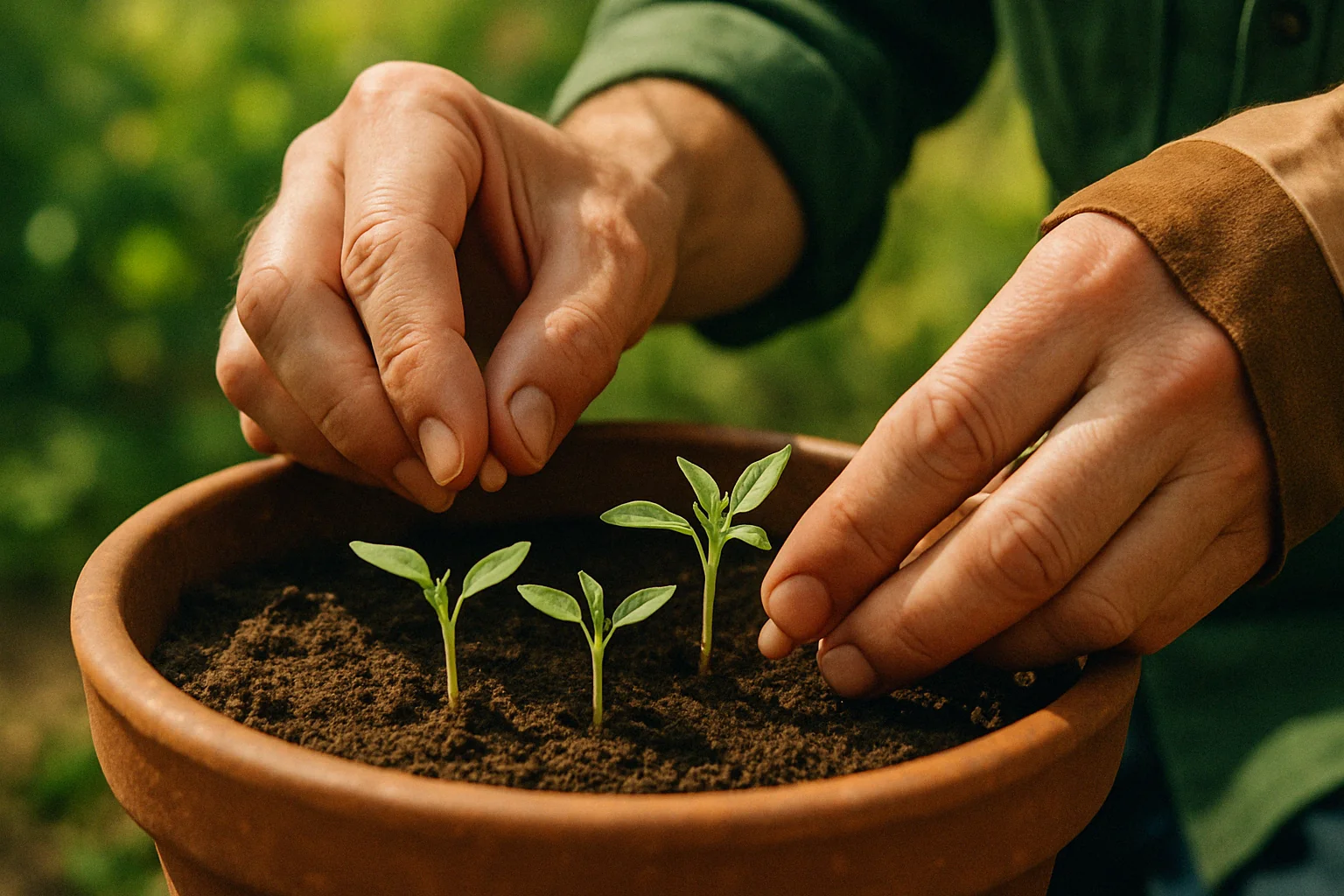
🌶️ Peppers 🌶️
Bell peppers and hot peppers are easy to grow from seed, requiring 8–10 weeks indoors before transplanting outside. Start seeds in early spring for a summer harvest, and be sure to provide plenty of sunlight. 🌞
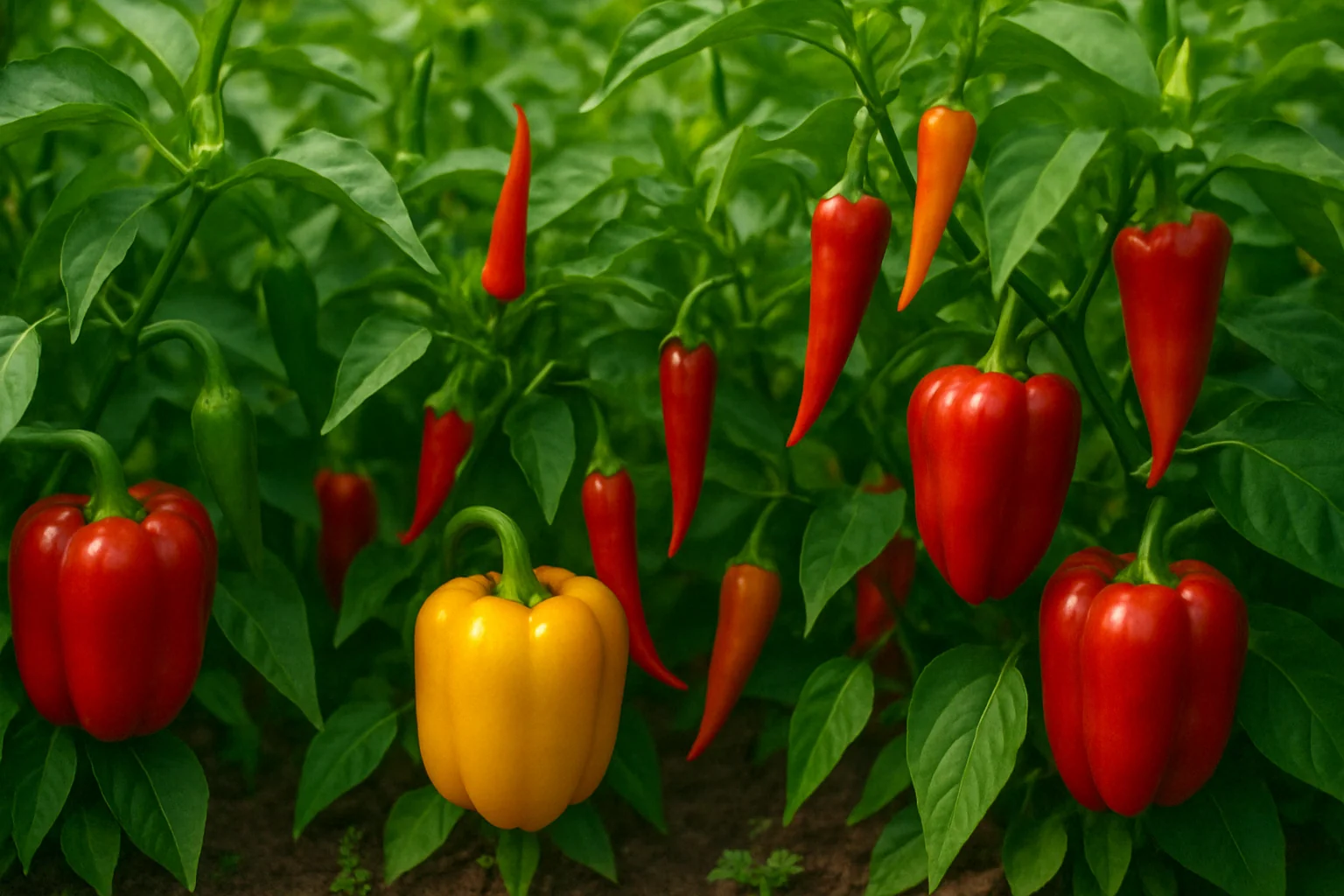
🥬 Lettuce 🥬
Lettuce grows quickly and can be directly seeded outdoors or started indoors for an early crop. It prefers cooler temperatures, so early spring planting is ideal for a continuous harvest. 🌱
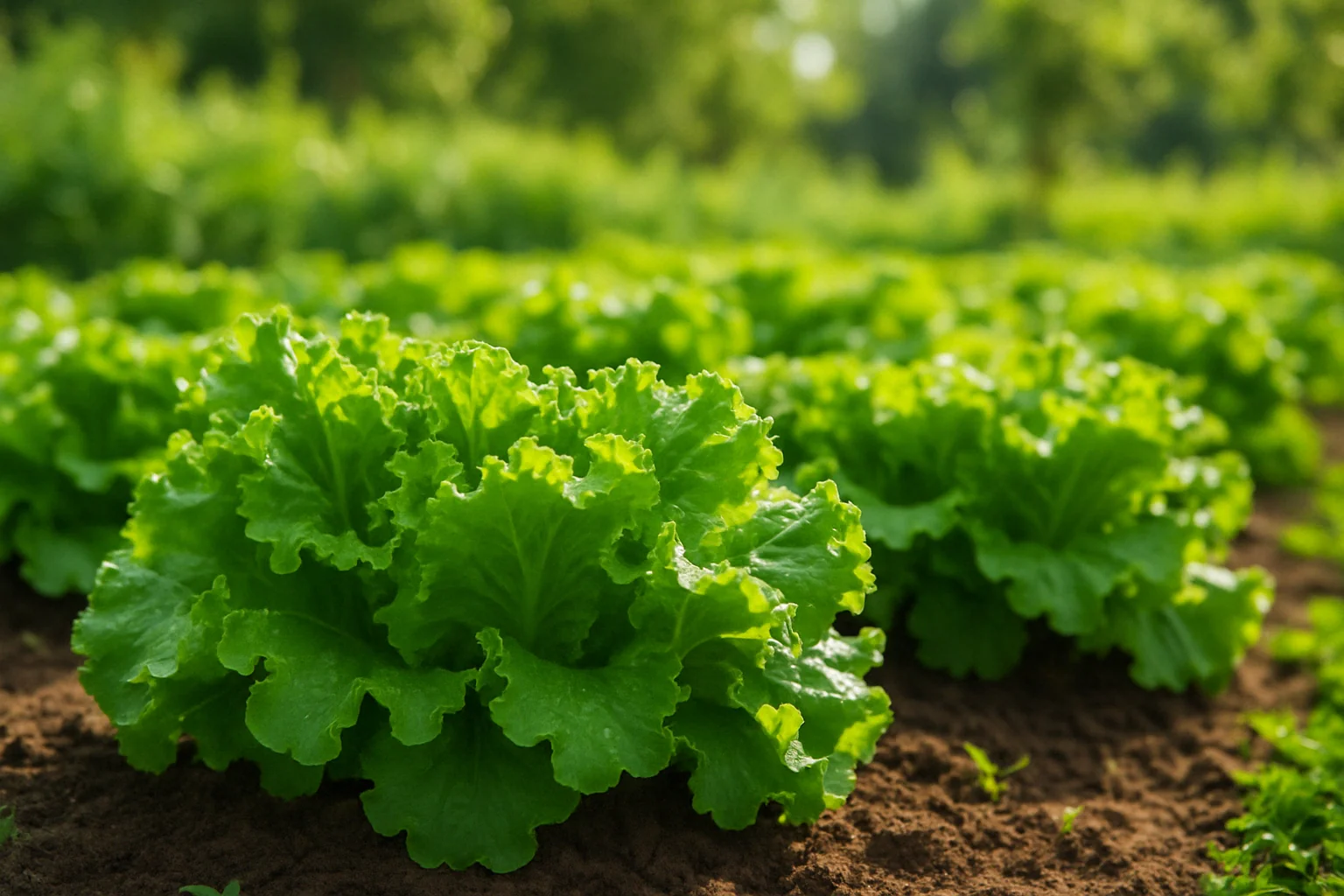
🥕 Carrots 🥕
Carrots are great for direct sowing in your garden. They prefer loose, well-drained soil and can be seeded as soon as the soil warms up in spring. Thin the seedlings as they grow to allow for proper root development. 🌿
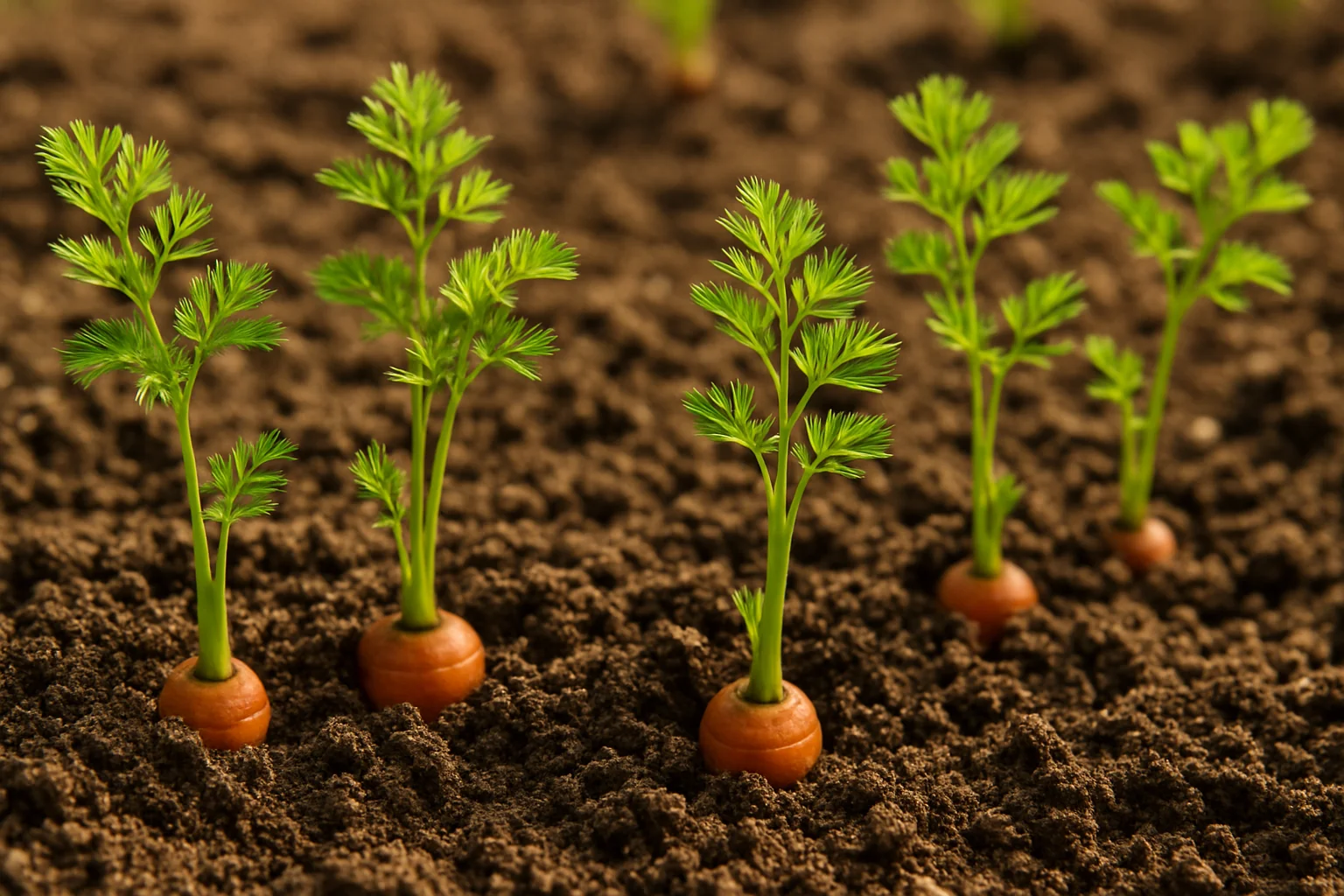
🥒 Cucumbers 🥒
Cucumbers need warmth to grow, making them perfect for starting indoors and transplanting once the danger of frost has passed. Space them well, as they tend to spread widely. 🌞
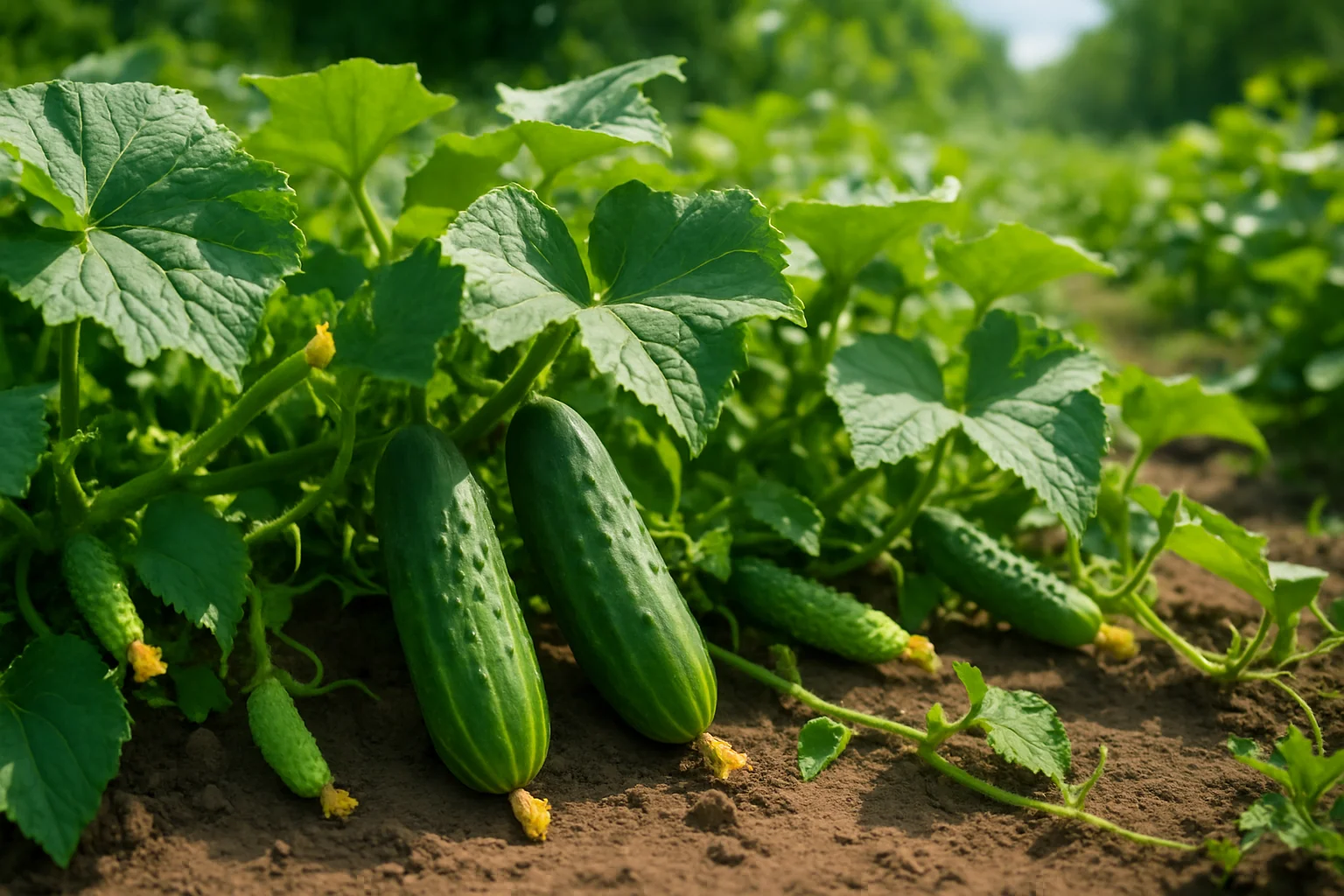
🍆 Zucchini 🍆
Zucchini is a prolific plant, and starting it from seed gives you a head start in the growing season. They need full sun and well-drained soil for healthy growth. Transplant them outdoors once the soil warms up. 🌻

🌿 Spinach 🌿
Spinach is a cold-hardy vegetable that can be started indoors in early spring or directly sowed in the garden. It matures quickly, providing a healthy, green crop in a short amount of time. 🍃
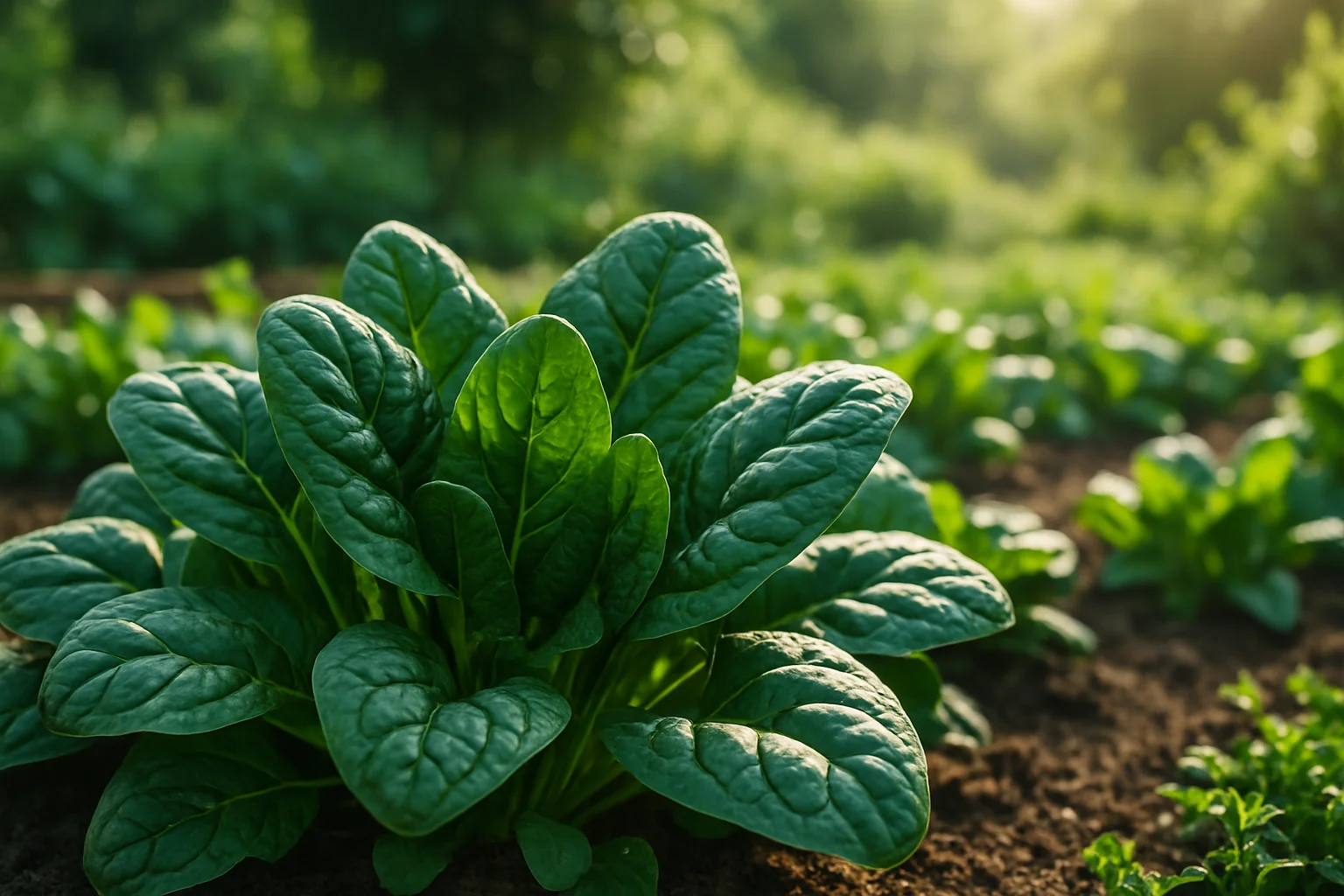
🌱 Beans 🌱
Beans are simple to grow from seed and can be directly sown into the ground once temperatures consistently stay above 70°F. They are nitrogen-fixers, improving soil health as they grow. 🌾
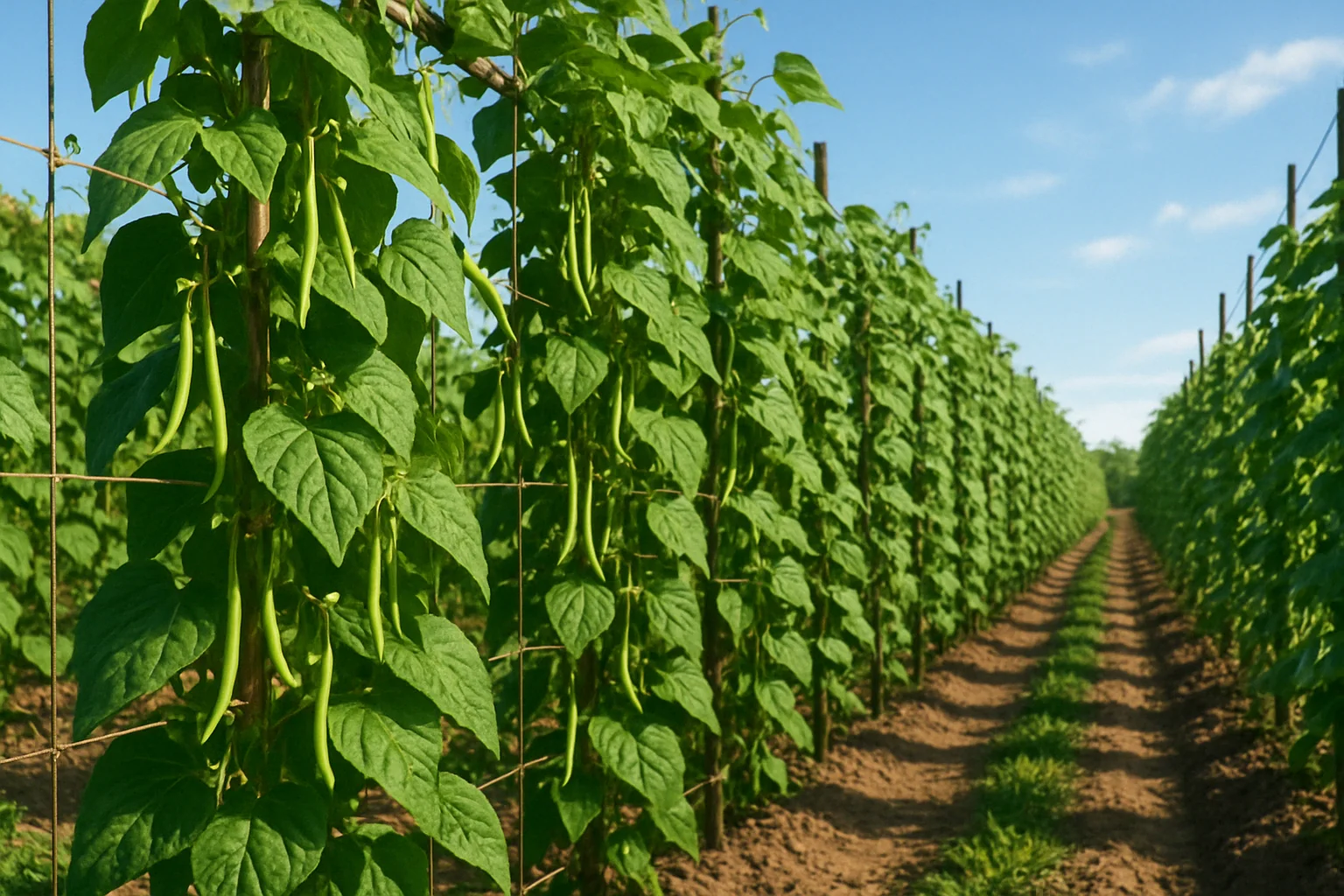
🌶 Radishes 🌶
Radishes are fast-growing and perfect for beginners. Directly sow seeds in the soil, and within 3–4 weeks, you’ll have a full crop. Their fast growth makes them a great choice for early spring gardening. 🌸

🥬 Cabbage 🥬
Cabbage grows best when started indoors and transplanted outdoors 4–6 weeks later. They thrive in cooler weather, so spring or early fall planting works best. Space them out for optimal air circulation and healthy heads. 🌿

Starting vegetables from seed allows you to enjoy the full process of growing your own food. Whether you’re looking for a quick harvest or planning for a long-season crop, these 10 vegetables are an excellent choice to begin your gardening journey. 🌱
🌻 Tips for Successfully Growing Vegetables from Seed 🌻
Growing vegetables from seed can be a rewarding and cost-effective way to fill your garden with fresh produce. Here are some expert tips to ensure your success:

🌱 Start with Quality Seeds 🌱
Always choose high-quality, fresh seeds from trusted sources. Look for varieties suited to your growing zone and climate for the best results. 🌼
🌿 Use Good Soil 🌿
Healthy soil is the foundation of strong plants. Choose a lightweight, well-draining seed-starting mix to give your seeds the best chance to germinate and grow strong roots. 🌸
💡 Provide Adequate Light 💡
Most vegetable seeds need plenty of light to sprout and thrive. If you’re starting seeds indoors, use grow lights or place them in a sunny window to ensure they get 12-16 hours of light per day. 🌞
💧 Maintain Consistent Moisture 💧
Keep the soil consistently moist but not waterlogged. Use a spray bottle or gentle watering can to prevent disturbing the seeds while keeping them hydrated. 🌻
🌡️ Control Temperature 🌡️
Seeds typically need warm soil to germinate. Maintain a temperature of 65-75°F (18-24°C) for most vegetables. Use a seedling heat mat if necessary to maintain warmth. 🌿
✂️ Thinning Seedlings ✂️
Once your seedlings have developed their first true leaves, thin them to prevent overcrowding. This helps the remaining plants grow strong without competing for resources. 🌼
🌤️ Harden Off Seedlings 🌤️
Before transplanting your seedlings outdoors, gradually acclimate them to outdoor conditions. Start by placing them outside for a few hours each day, increasing the time spent outdoors over the course of a week. 🌷
🗓️ Timing Is Key 🗓️
Pay attention to planting dates. Most vegetables should be started indoors 6-8 weeks before your last expected frost date. This gives your plants a head start without risking frost damage. 🌿
By following these tips, you’ll have healthy, strong vegetable plants ready for your garden. With the right care, your garden can thrive with the produce you’ve grown from seed! 🌱
🌱 Troubleshooting Common Issues When Starting Seeds 🌱
Starting seeds is an exciting journey, but sometimes things don’t go as planned. Here are some common issues and how to troubleshoot them effectively:
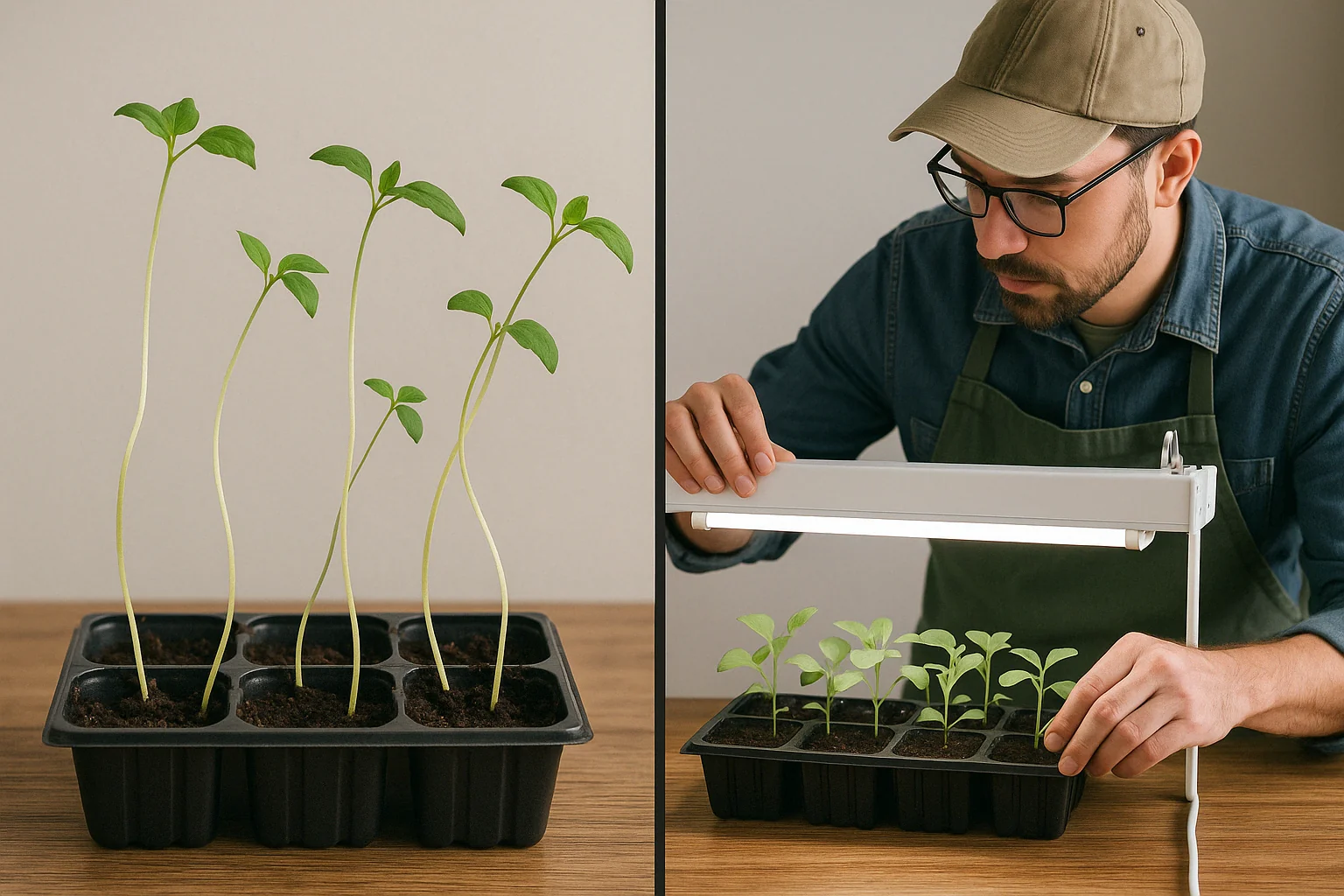
1️⃣ Seeds Not Germinating 1️⃣
If your seeds aren’t sprouting, check the following:
🌡️ Temperature 🌡️
Ensure you’re providing the correct temperature for seed germination, usually between 65-75°F (18-24°C). 🌞
💧 Moisture 💧
Keep the soil consistently moist, but not waterlogged. Too much water can suffocate seeds, while too little will dry them out. 💦
💡 Light 💡
Some seeds require light to germinate, while others need darkness. Make sure you’re following specific seed packet instructions. 🌿
2️⃣ Leggy Seedlings 2️⃣
Leggy seedlings are a common issue caused by insufficient light.
💡 Solution 💡
Provide 12-16 hours of light per day using grow lights if you’re growing indoors. If using natural light, make sure they’re close to a south-facing window. 🌞
3️⃣ Mold Growth 3️⃣
Mold on the surface of the soil is usually caused by excessive moisture and poor air circulation.
🌬️ Solution 🌬️
Reduce watering and ensure your growing area has proper ventilation. You can also gently remove the mold with a clean cloth or sprinkle cinnamon on the soil to prevent it from spreading. 🍂
4️⃣ Yellowing Leaves 4️⃣
Yellow leaves can indicate nutrient deficiencies, overwatering, or poor drainage.
💧 Solution 💧
Check the soil moisture regularly. If the soil is too wet, allow it to dry out. Ensure the seedlings are in well-draining soil and consider adding a diluted, balanced fertilizer. 🌱
5️⃣ Dampening-Off Disease 5️⃣
Dampening-off is a fungal disease that kills seedlings at the soil line, typically caused by high humidity and overcrowding.
🧴 Solution 🧴
Space seedlings adequately to allow airflow. Water from the bottom to avoid wetting the foliage, and consider using a fungicide as a preventive measure. 🍃
By following these simple steps and monitoring your seed-starting environment, you’ll have healthy, thriving plants in no time! Troubleshooting common seed-starting problems is part of the learning process, and with patience and the right techniques, you’ll improve with each planting season. 🌷
🌻 Final Thoughts 🌻
Starting vegetables from seed is a rewarding and cost-effective way to create a thriving garden. By selecting the best vegetables to start from seed, you can enjoy the process of nurturing plants from the ground up, gaining a deeper connection to your garden. Whether you’re growing fast-growing veggies like radishes and lettuce or experimenting with longer-growing crops like tomatoes and cucumbers, each seed offers the promise of fresh, homegrown produce. 🥕🍅
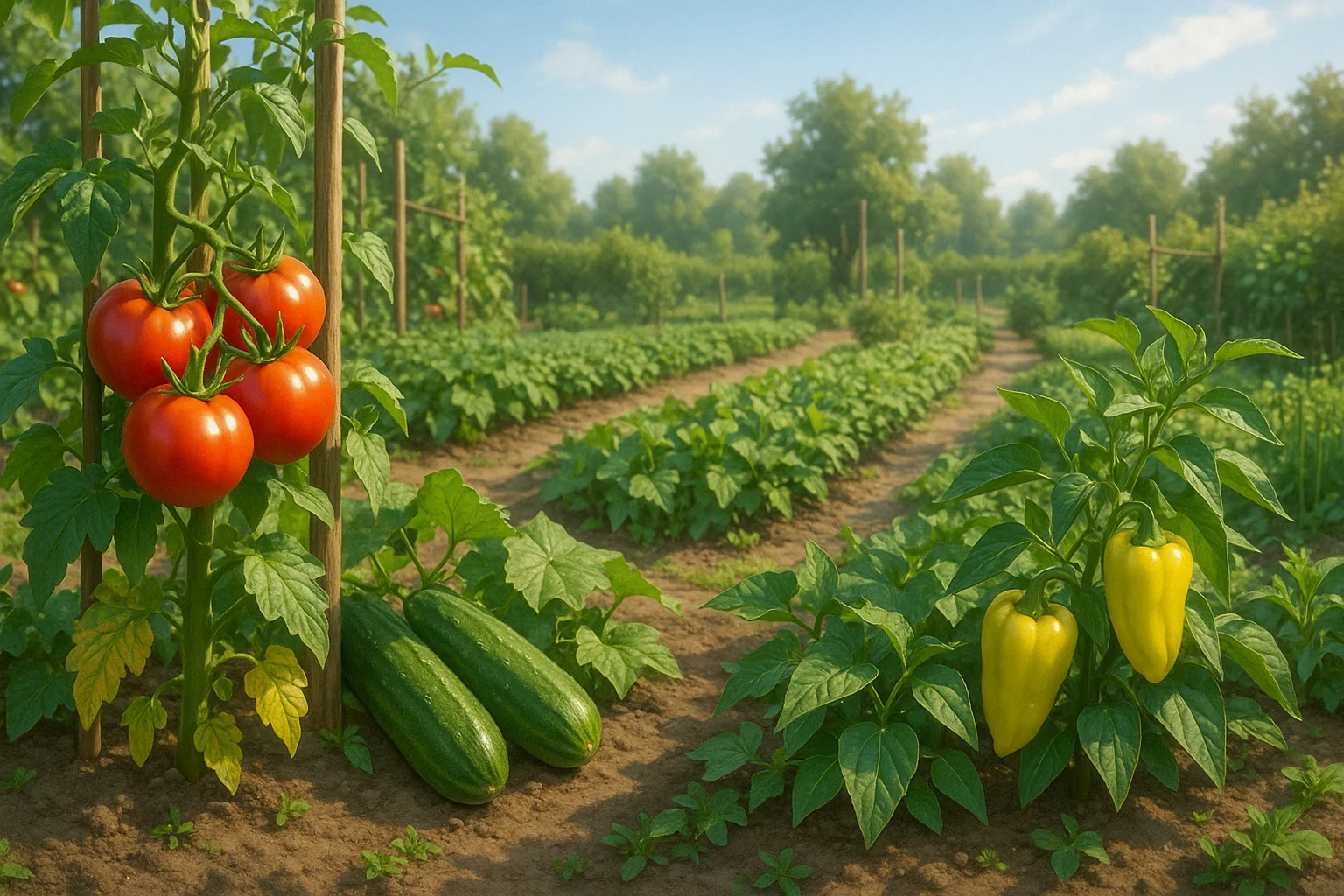
Remember, the key to success is knowing your growing conditions, properly preparing your soil, and giving your seedlings the care they need. With a little patience and the right approach, you’ll be rewarded with a flourishing garden and the satisfaction of harvesting your own crops. 🌿🍅
So, take the leap, start with these top 10 vegetables, and enjoy the journey of growing your own food from seed to table! 🍴
Frequently Asked Questions (FAQ)
What are the best vegetables to start from seed for beginners?
Some of the best vegetables to start from seed for beginners include lettuce, radishes, peas, spinach, and beans. These plants are fast-growing, easy to care for, and typically require less maintenance, making them perfect for new gardeners.
Can I start tomatoes from seed indoors?
Yes, tomatoes are one of the best vegetables to start from seed indoors. You can begin sowing tomato seeds 6-8 weeks before the last expected frost date. Once the seedlings are strong enough and the weather warms up, transplant them into your garden.
When is the best time to start vegetables from seed?
The best time to start vegetables from seed depends on your local climate and the specific vegetable. Generally, cool-season crops like lettuce and peas can be started 6-8 weeks before the last frost date, while warm-season crops like tomatoes and peppers should be started indoors 8-10 weeks ahead.
How do I know when to transplant my seedlings into the garden?
Seedlings should be transplanted when they are large enough to handle and the outdoor conditions are suitable. Look for strong, sturdy plants with at least 2-3 sets of leaves. Also, ensure that the danger of frost has passed and the soil has warmed up.
Can I grow vegetables in containers from seed?
Absolutely! Many vegetables, including tomatoes, peppers, and herbs, can be grown in containers from seed. Make sure the container has proper drainage and provide the plants with enough sunlight and water to thrive.
What are some fast-growing vegetables to start from seed?
Fast-growing vegetables include radishes, lettuce, spinach, and beans. These plants often mature in 30-60 days, allowing you to enjoy a quick harvest and experiment with more crops throughout the growing season.
Do I need to start seeds indoors, or can I direct sow them into the garden?
Some vegetables, like carrots, beans, and peas, can be directly sown into the garden soil. However, others, like tomatoes and peppers, benefit from being started indoors, where the controlled environment helps them grow stronger before being moved outdoors.
How long does it take for seeds to germinate?
Germination times vary depending on the vegetable. Some vegetables, like radishes, germinate in just 3-5 days, while others, like peppers and tomatoes, may take 7-14 days. Always check the seed packet for specific germination information.
